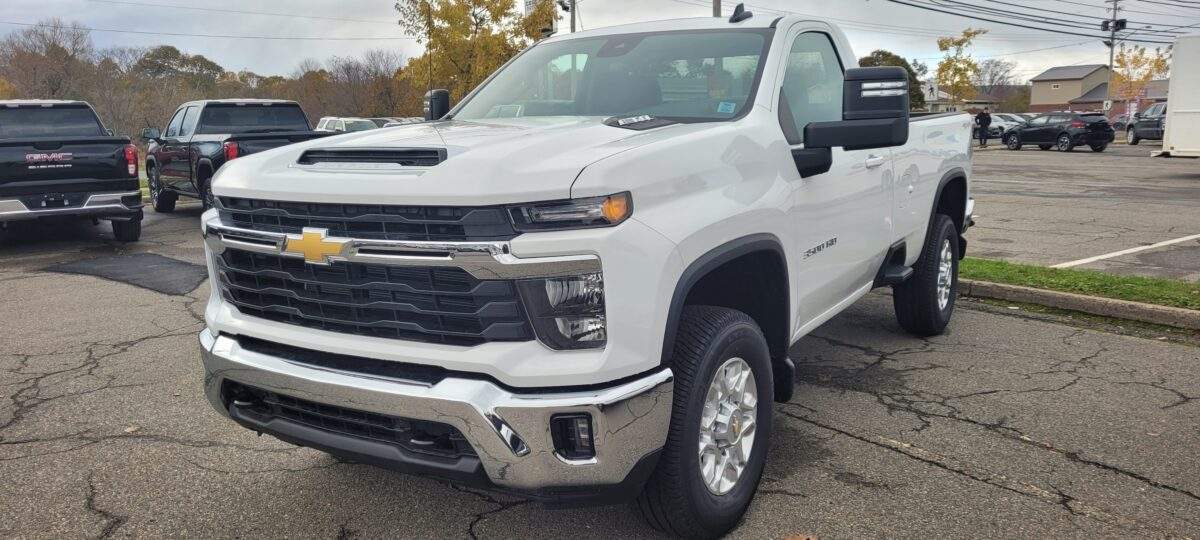
Why Is A 3500 Called A 1 Ton
If you’re browsing for a new truck, you’ve likely seen terms like “1-ton” thrown around.
While confusing at first, this terminology has a historical basis. Let’s break down the “1-ton” designation and what it means for modern, powerful vehicles like the 3500.
Understanding the Origins
In the past, the “ton” in truck descriptions directly referred to payload capacity – the maximum safe weight a truck could carry.
A “1-ton” truck could handle 2,000 pounds of cargo. As trucks advanced, they outgrew this limitation, exceeding the original payload amounts significantly.
However, the terminology stuck!
Decoding Truck Classifications
Nowadays, trucks in the US are mainly categorized by Gross Vehicle Weight Rating (GVWR).
This tells you the maximum allowable weight when the truck is fully loaded with people, cargo, and any towed weight. Here’s a general breakdown:
- Light-duty pickups: GVWRs between 6,000 and 8,500 lbs.
- Mid-size pickups: GVWRs between 8,500 and 10,500 lbs.
- Full-size pickups: GVWRs typically over 10,500 lbs.
The “1-Ton” Connection
Many full-size trucks have GVWRs around 11,000 lbs – equivalent to one US ton.
This is why trucks like the Ford F-350, Chevrolet Silverado 3500, and Ram 3500, despite being far stronger than their ancestors, retain the “1-ton” nickname.
Payload vs. Towing Capacity
Don’t forget that payload and towing capacity differ:
- Payload: The maximum weight the truck bed and cabin can safely carry.
- Towing Capacity: The maximum weight a truck can pull on a trailer.
Modern 1-ton trucks often have payload capacities reaching 7,000+ pounds, but their true strength lies in their monstrous towing capabilities, essential for hauling large trailers and RVs.
The Legacy of the “1-Ton”
Historically a measure of freight, the “ton” became a way to distinguish trucks built for serious hauling.
Though modern 1-ton trucks have surpassed their name’s original meaning, the term remains a symbol of power and capability.
| Concept | Explanation |
|---|---|
| Historical “1-Ton” | Originally referred directly to payload capacity (2,000 lbs) |
| Modern Classification | Trucks primarily classified by Gross Vehicle Weight Rating (GVWR) |
| GVWR Ranges | Light-duty: 6,000 – 8,500 lbs Mid-size: 8,500 – 10,500 lbs Full-size: Typically over 10,500 lbs |
| “1-Ton” Connection | Full-size trucks with GVWRs around 11,000 lbs (one US ton) earn the “1-ton” nickname, even if their capacity is now much greater. |
| Payload vs. Towing | Payload: Maximum weight carried in the truck itself Towing Capacity: Maximum weight pulled via trailer |
| Modern 1-Ton Trucks | Examples: Ford F-350, Chevrolet Silverado 3500, Ram 3500. Known for high payload and exceptional towing power. |
Sources
- Sunset Chevrolet: What’s the Difference Between 1500, 2500, 3500 Trucks? https://www.sunsetchevrolet.com/model-research/1500-vs-2500-vs-3500-trucks/
- Cars.com: What Does Half-Ton, Three-Quarter-Ton, One-Ton Mean When Talking About Trucks? https://www.cars.com/articles/what-does-half-ton-three-quarter-ton-one-ton-mean-when-talking-about-trucks-1420690417808/
- Autotrader: What Do Pickup Truck Numbers Actually Mean? https://www.autotrader.com/car-shopping/what-do-pickup-truck-numbers-actually-mean-271643
We hope you enjoyed this post on Why Is A 3500 Called A 1 Ton let us know in the comments below what you think.
